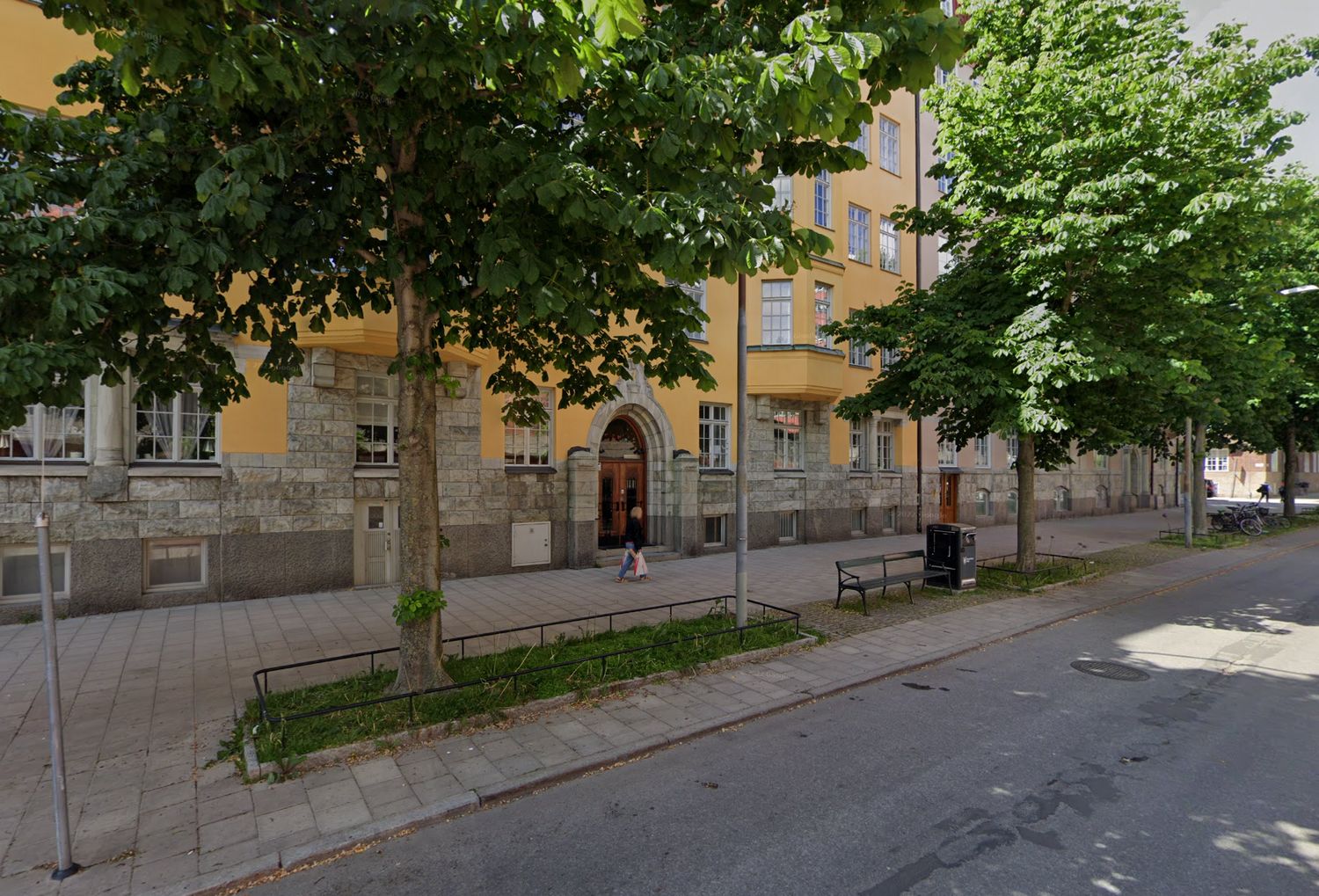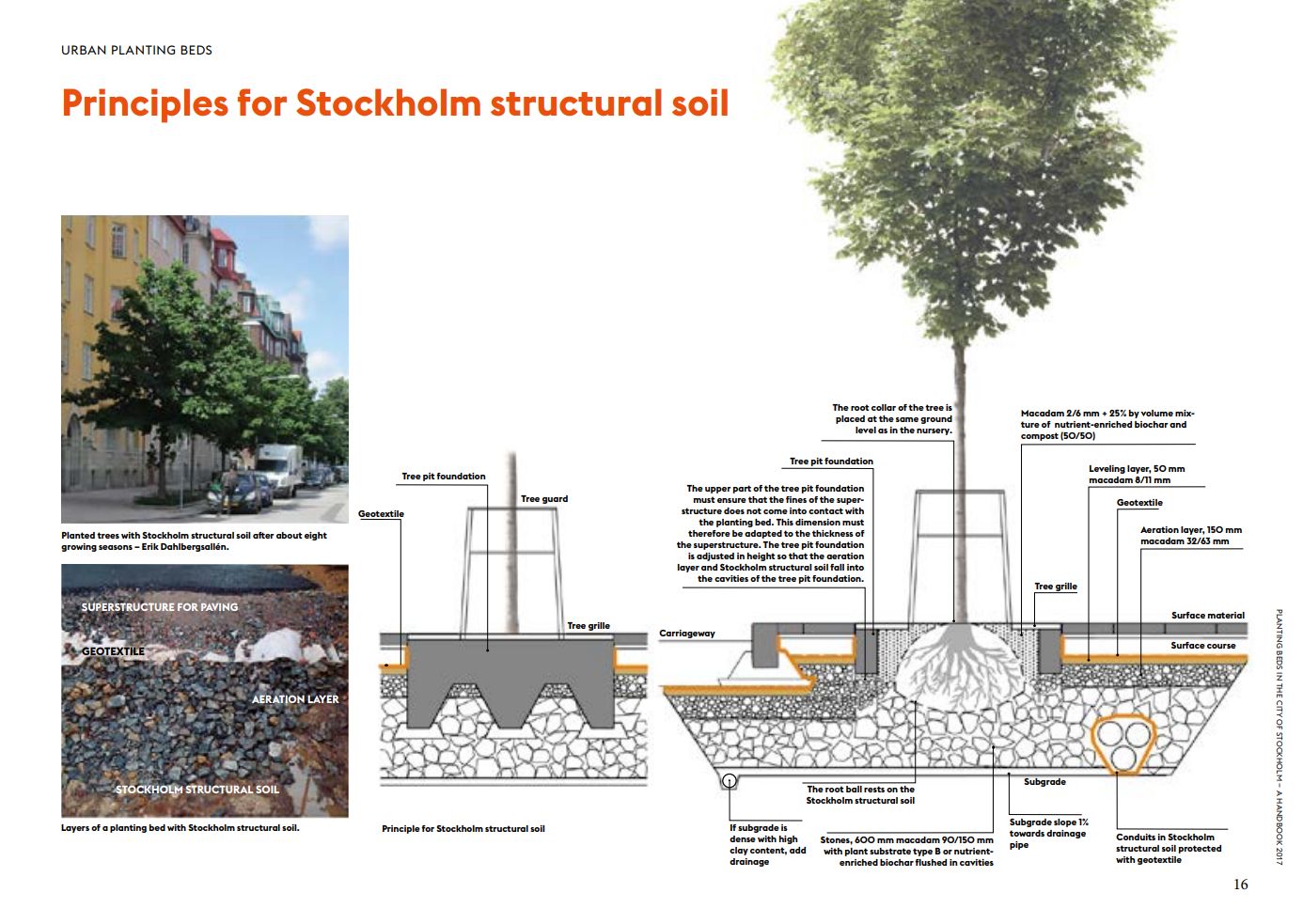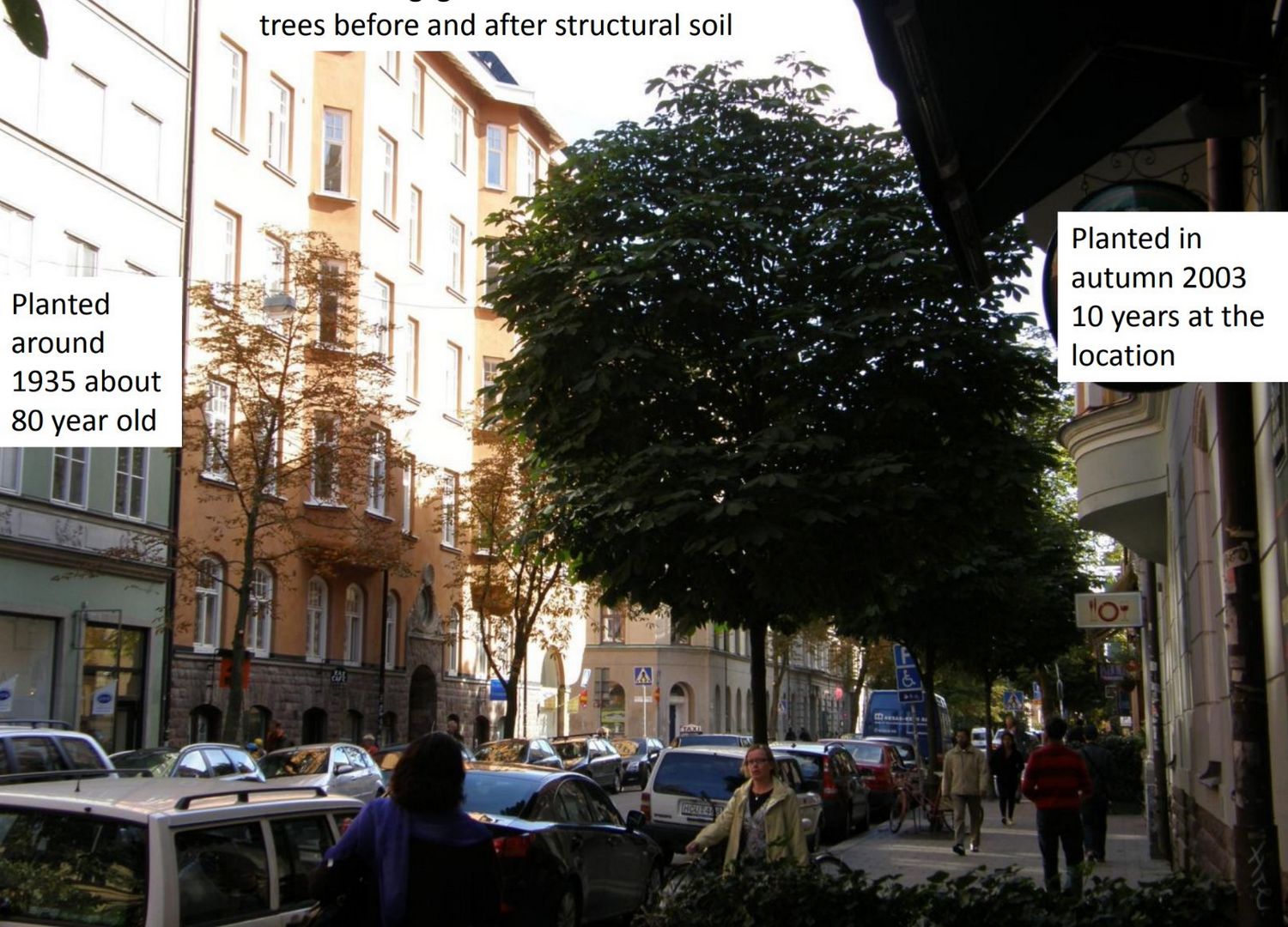The Stockholm tree pit, a technique that boosts urban tree growth
The Stockholm tree pit, created only a decade ago, is a technique that will surely intrigue local authorities and landscapers.

The Stockholm tree pit, created only a decade ago, is a technique that will surely intrigue local authorities and landscapers. And with good reason: it simultaneously reduces runoff and improves tree growth, while preserving the sturdiness of urban soil. Turning the spotlight on an innovative technique with its roots in tarmac and railroad embankments.
When rainwater management becomes a headache
Local authorities are very familiar with stormwater runoff problems. In Switzerland, floods cause CHF 270 million a year, and 30-50% of this damage is caused by runoff (1). Due to a lack of vegetation and permeable soil, urban environments are unable to absorb runoff, and this increases their risk of being subject to heat islands, it damages their biodiversity, and makes them even more prone to air pollution.
Planting trees can help in these different areas, but without a suitable environment, they lack oxygen and water and eventually wither. The essential question then becomes: how can we ensure that these plants thrive in an urban environment?

© Google Maps
A simple planting system inspired by tarmac and railroad tracks
As the name suggests, the Stockholm tree pit concept took root in Sweden, under the impetus of Björn Embrén. Alarmed by the decline in trees in Stockholm due to soil sealing, he was inspired by railroad embankments where only a small amount of organic matter is needed for healthy trees to grow. He used a soil and stone mixture that both aerates and fertilizes the soil. It has a dual objective:
- improve tree growth;
- facilitate rainwater infiltration.
In concrete terms, a mixture of crushed rocks of varying diameters (like tarmac) and carbonaceous material (biochar or terra preta), a concrete frame, metal wells, and geotextile are used in the Stockholm tree pit method. This system has many advantages:
- no patent
- a high growth rate for planted trees
- can be installed on an existing tree
- good properties of mechanical resistance, even under heavy-vehicle traffic
- easy to implement by building and public works companies
- requires little topsoil, a resource that is becoming rare
- improves the biodiversity in towns
- reduce watering needs
However, in addition to landscape professionals’ lack of experience, the system has a few drawbacks: installation costs can be high, and it is impossible to reuse existing soil.

In Stockholm, a pilot tree pit site has become the norm
A study conducted in the 2000s revealed that only a third of the capital's trees were in good health. Under the direction of Björn Embrén, 2,000 flowerbeds were depaved: an earth and stone mixture topped with a dry-stone aeration layer, enhanced by wells to facilitate gas exchange and rainwater collection. Drains divert runoff from the sidewalk to these wells.
On the Erik Dahlbergsallén pilot street, the circumference of planted trees has increased from 30-35 cm to 70-83 cm in 10 years, even surpassing that of trees that have been there for more than 80 years. To be more precise:
- 2.3 million liters of rainwater are managed by the tree rooting area per year
- consequently, 4,600 m2 of roofs and sidewalks were disconnected from the sewage system
- €2,600/year in water treatment savings
This is an example of successful urban greening, to the extent that this technique has become the standard for all other planting projects in the public spaces of Stockholm.


Paysalia can help you make your city green: discover other examples of urban greening and the most effective, environmentally friendly solutions at our next show!
(1) G'plus Romandie: "L'eau, le sol et la cité", juin 2020



